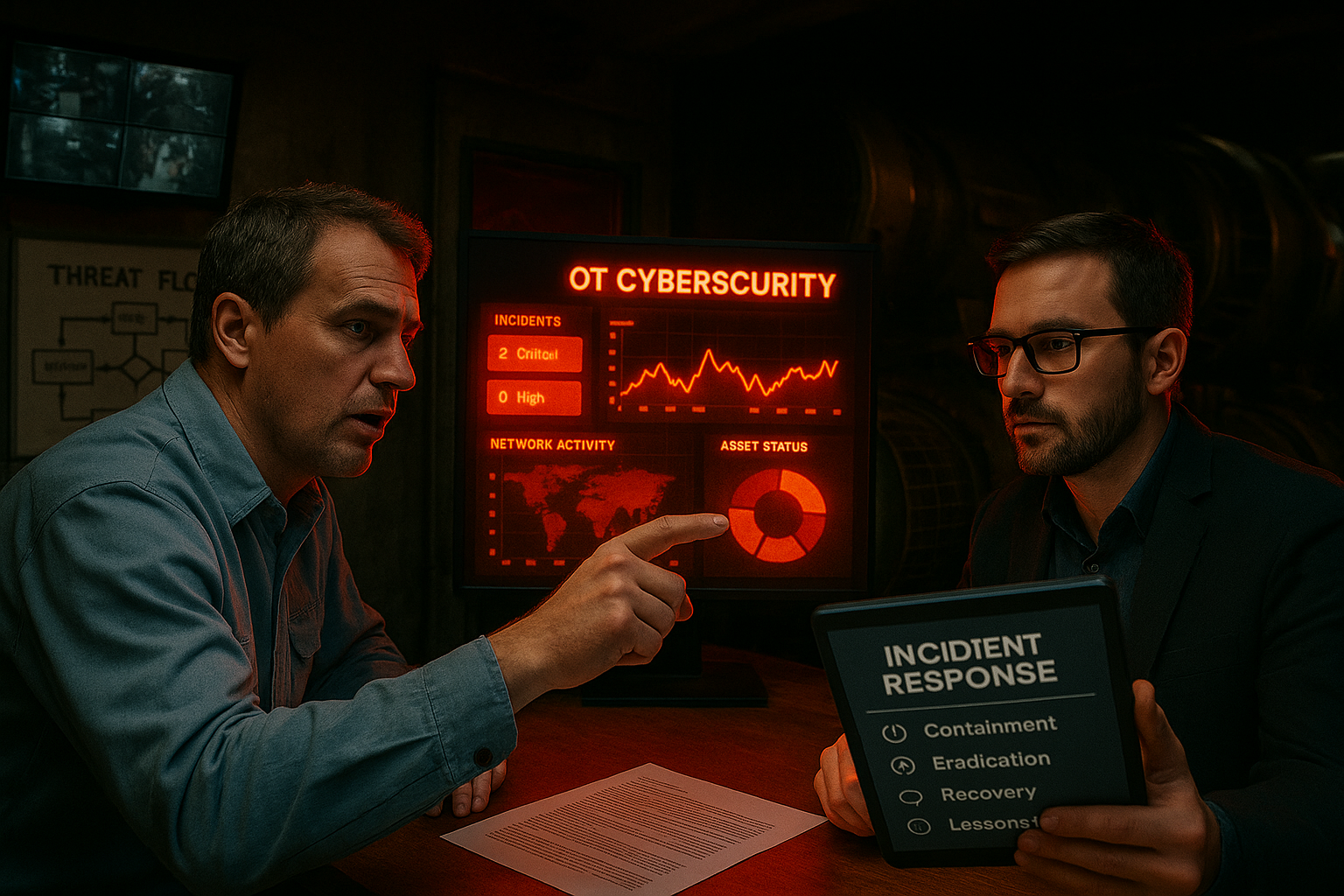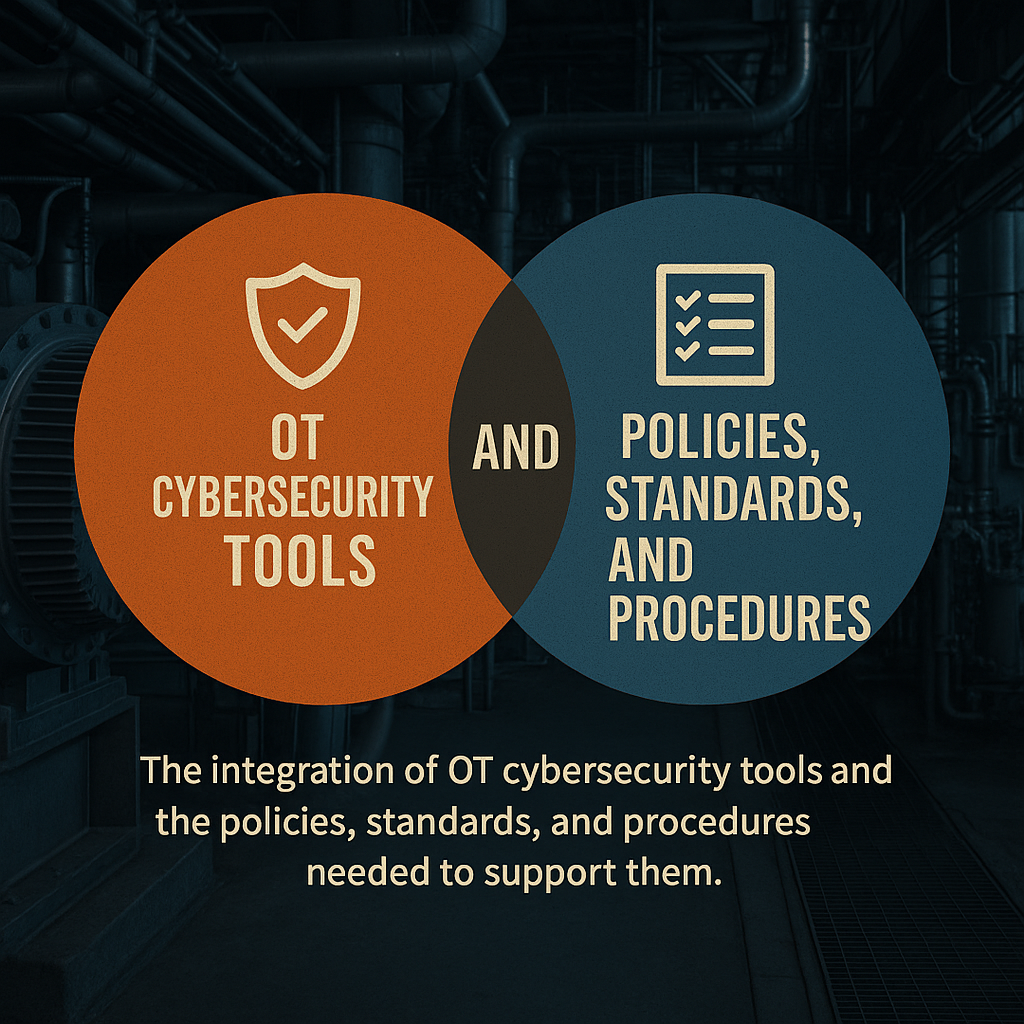Introduction: The Post-Deployment Reality
You’ve deployed the tools. Asset discovery is humming. Network traffic is being inspected. You might even have a shiny new OT SIEM dashboard lighting up your SOC.
But then reality sets in.
Despite the investment in OT cybersecurity tools—visibility platforms, threat detection, firewalls, segmentation appliances—your job isn’t done. In fact, it may have just started.
Because in operational technology environments, tools alone don’t create security. People, process, and governance do. And if those elements aren’t in place, critical questions start to surface.
Tools Without Context: A Common Pitfall
OT security tooling often introduces capabilities—alerts, logs, vulnerabilities—that require action. But who owns the response? What happens next?
Without clear operational alignment, these tools can become:
- Noisy but unactionable
- Underutilized or misunderstood
- Sources of friction between IT and OT teams
Which leads us to the big question: Now that the tools are installed, what’s the plan?
The Key Questions That Still Need Answers
- Who Uses the Tool—and When?
- Is it the SOC team, site engineers, or both?
- During normal operations, who monitors and triages?
- During incidents, who makes decisions about isolation or shutdown?
Without defined roles, even the best tools generate confusion instead of clarity.
- What Procedures Govern Use of the Tools?
- Are there runbooks for handling common alerts or anomalies?
- Do you have job aids or checklists tailored for OT engineers?
- What does a “normal” event look like—and how is escalation handled?
Tools need repeatable, documented workflows that can be followed by both security analysts and plant personnel.
- What Policies and Standards Apply?
- Has your OT security policy been updated to reflect new tooling?
- Do standard operating procedures (SOPs) incorporate tool usage?
- Are roles and responsibilities clearly outlined in your governance model?
Security tools often require policy-level reinforcement to be effective and enforceable.
- How Do You Measure Effectiveness?
- What are your KPIs? Number of incidents detected? Mean time to respond?
- Are alerts being investigated—or ignored?
- Is there a feedback loop to improve tool configuration and usage?
Security programs thrive on continuous improvement, not just tool uptime.
- What Happens When Something Goes Wrong?
- Are incident response plans OT-specific?
- Who has the authority to isolate a PLC or take a line offline?
- Are these scenarios rehearsed with both IT and OT personnel?
Preparedness matters more than posture. The best detection capability is only useful if it drives coordinated, timely action.
Building the Operating Framework Around OT Tools
Here’s what it takes to operationalize OT security beyond the technology:
👷 Standard Operating Procedures (SOPs)
- Define procedures for asset monitoring, alert triage, and threat validation.
- Make them role-specific for SOC teams, site engineers, and third-party integrators.
🛠️ Job Aids & Runbooks
- Develop quick-reference guides and flowcharts for handling common scenarios.
- Ensure they’re accessible where decisions are made—on the plant floor, in the SOC, or at remote sites.
📚 Policies and Governance Updates
- Refresh OT security policies to reflect new responsibilities and expectations.
- Incorporate standards like IEC 62443 to structure responsibilities and zone-based controls.
🔁 Training and Simulation
- Run regular tabletop exercises and scenario walkthroughs using real tool data.
- Train staff not just on the tools, but on how to use them within your specific environment.
Final Thoughts: Tools Start the Journey—Processes Drive It Forward
Too often, OT cybersecurity programs stall because organizations stop at tooling. But tools are only the scaffolding—you need operational governance, clarity of roles, and actionable procedures to build security resilience.
If you’ve deployed OT security tools, now is the time to ask:
- Are we ready to respond with speed and confidence?
- Do our people know what to do with the data they see?
- Have we built the policies and playbooks that turn alerts into action?
📌 Action Steps for Cybersecurity Architects and OT Leaders
- Audit your current OT security tools against real-world procedures.
- Develop or update job aids and SOPs for each major use case.
- Review incident response runbooks and validate cross-domain responsibilities.
- Train staff on not just what the tool does—but what they’re supposed to do with it.
- Measure tool usage, not just deployment. Build metrics that reflect operational value.
Need help translating OT security tools into operational workflows? Connect with Cabreza — we help organizations build processes that transform tools into outcomes.

Engineer and security analyst review an OT cybersecurity dashboard and incident response runbook together.











